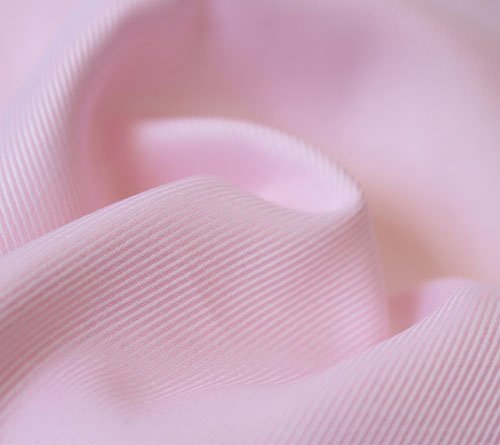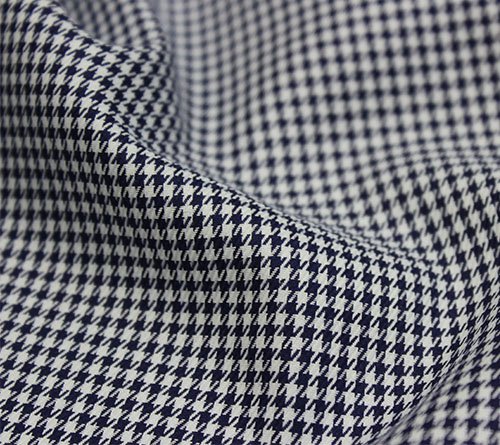Having over 90 years of experience in the trade, certain key concepts and terminology have become second nature to us. In order to equip you with the essential tools to make an informed decision while selecting fabrics from our extensive range, we have highlighted some key points below. You can always get in touch with us if you would like to know more.
The weave or design of a fabric is the manner in which the weft threads are interlaced with the warp threads. The smallest unit of the weave is known as the “pattern” or “repeat”, which will produce the design required in the fabric when repeated. Using a combination of the thread color and the weave, different patterns of the fabric can be created.
Let’s go through some of the different kinds of weaves which are available with us

Poplin or Broadcloth weave is the most simple and commonly produced weave in fabrics. It is made by alternately passing weft yarns over and under the warp yarns along the full length of the fabric. These are tightly woven flat fabrics with very little sheen, given the lack of texture. Poplin weaves are thus ideal for professionals and for office wear.

The Twill weave is easily identifiable by the diagonal texture or pattern in the fabric. Depending on the count and construction, Twills vary from being very fine and noticeable only on closer inspection (Royal Twills), to having very thick and prominent diagonal cords. Twills will almost always have more sheen, opaqueness and wrinkle resistance to Poplins. They are also not as crisp and hence drape better than Poplins. These thus make good smart casual shirts.

In a Fil-à-Fil weave (also known as End-on-End weave), the fabric is woven by alternating a white thread with a colored thread, resulting in a heathered effect. Variations are created by alternating light and dark warp and weft threads, to give an inconsistent yet rich texture. Fil-à-Fils work well as under-the-suit shirts, since they look solid from far and only when closer you see the pattern. These are extremely cool and comfortable fabrics and often worn with a pair of jeans or cotton trousers.

Similar to Fil-à-Fils, Chambrays have a colored thread inter-woven with a white thread creating an irregular color to it. However, chambrays are generally much heavier and more appropriate for casual wear than Fil-à-Fils since they have a faded look, with soft colors, rather than sharp shades. Chambrays work well for summer and resort wear.

Satin is the weave with the most shine or luster. It is woven by interweaving four or more weft yarns over a single warp yarn or vice versa. It thus has a “loose construction” which drapes really well and often used in garments for women. The luster gives a very exclusive impression and is often worn under the suit

The oxford weave has been immortalized by the classic button-down shirt. Oxfords are soft, durable and slightly heavy weaves. It is woven in a symmetrical basket type pattern with one yarn crossing two yarns. The Pinpoint Oxford is a variation of the oxford weave in which the yarn is finer and tighter than the regular oxford.


Houndstooth is another variation of the Twill weave, characterized by broken checks or abstract four-pointed shapes. Different versions can be achieved by using different colored threads and weaving patterns. The simplest version is known as pinwheel which is made by weaving two weft threads over and under the warp.

Jacquard weaves are produced on special looms, which are programmed to raise each warp thread independently of the other threads. Jacquards are characterized by complex woven-in designs, often with large design repeats or effects. This weaving process is more time consuming and labor intensive than a basic weave. However, they can provide beautiful and soft gradations of color tones and bold outlined patterns that are very complex, such as landscapes, portraits, and unique designs.